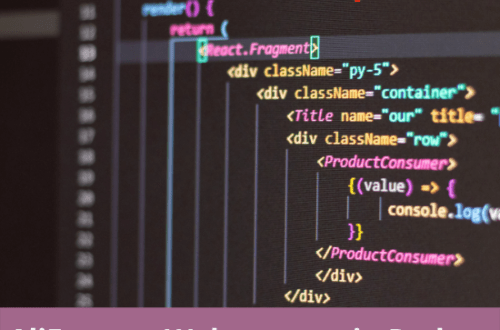What Is Application Security?
Application security is the practice of protecting computer systems and applications from threats and vulnerabilities. This includes measures to prevent unauthorized access, modification, use, destruction, disruption, or disclosure of an application or its data
Application security is important because applications are often the primary targets of cyber attacks. Hackers may try to exploit vulnerabilities in an application to gain access to sensitive information, steal data, or disrupt the operation of the application. Application security aims to prevent these types of attacks and protect against the consequences of a successful attack.
Application Security Best Practices
Monitor the Software’s Supply Chain
Most (but not all) software relies on external components and libraries for some functionality. This is important for development productivity, however, software supply chains are increasingly under attack. Cyber attackers can target known or undisclosed vulnerabilities in popular libraries or inject malicious code and vulnerabilities into them.
Managing the software supply chain is critical to ensuring robust application security. Software configuration analysis (SCA) tools help you manage supply chain risk by identifying third-party libraries and code used by your applications. Development teams can leverage this list to identify known vulnerabilities, fix them, and apply updates and patches to outdated software components.
Manage Privileges
Not everyone in your organization should have access to everything. Restrict access to applications and data to only those who need to, following application security and network security best practices.
There are two reasons for this. First, if a hacker gains access to one account, it is important to prevent them from moving laterally to other, more sensitive data. Second, consider the risk of insider threats or accidental data exposure. Trusted insiders can cause damage to an organization, intentionally or unintentionally, and so their privileges should be limited to a minimum.
Use Pentesting
Penetration testing, also known as pentesting, is a best practice in application security because it helps identify vulnerabilities and weaknesses in an application or system.
During a pentest, a team of security experts attempts to exploit vulnerabilities in an application or system in order to identify potential security issues. This can involve using a variety of techniques, such as trying to bypass authentication controls, injecting malicious code, or attempting to access sensitive data.
Pentesting is an important best practice because it allows organizations to identify and address vulnerabilities before they can be exploited by attackers. By simulating a real-world attack, pentesting helps organizations understand the types of threats they may face and take steps to prevent them.
Pentesting should be an ongoing process, as new vulnerabilities can be introduced into an application or system over time. Regular pentesting can help organizations stay ahead of potential threats and keep their applications and systems secure.
Implement DevSecOps Practices
The DevSecOps or shift security left movement focuses on integrating important security tasks early in the software development lifecycle (SDLC). Instead of leaving security to SDLC’s test phase, DevSecOps includes:
- Defining security requirements—during the requirements phase of the development lifecycle, the developers define the features and technologies the application should include. In addition to functional and performance-related requirements, these should ideally cover security requirements that describe potential vulnerabilities and how to mitigate them.
- Creating test cases—developers usually write test cases to evaluate whether an application conforms to defined requirements. Once the security requirements are defined, the DevOps team can start building test cases to ensure they are implemented correctly.
- Automating testing—automating as much as possible is a core tenet of DevOps (and by extension, DevSecOps). Security testing automation, including the use of varied security test cases and AppSec tools such as static application security testing (SAST), interactive application security testing (IAST), and dynamic application security testing (DAST), can reduce friction in the process.
Security vulnerabilities are commonly found in production code, which is a big part of why security is underestimated during development. Properly implementing effective DevSecOps practices and principles can help address this issue and reduce the risk to an organization’s applications.
Proper Logging Practices
Proper logging practices are an important best practice in application security because they help organizations detect and respond to security incidents.
Logging involves recording events and activities that occur within an application or system, such as user logins, data access, and system changes. This information can be used to track activity, identify unusual patterns, and diagnose problems.
Proper logging practices involve ensuring that the right types of events are logged, that log data is stored in a secure and centralized location, and that logs are regularly reviewed and analyzed.
Having a robust logging system in place can help organizations identify security incidents as they occur, allowing them to respond quickly and minimize the impact of a breach. Proper logging practices also help organizations meet regulatory requirements and ensure compliance with industry standards.
Conclusion
In conclusion, effective application security is crucial for protecting against cyber threats and ensuring the integrity and availability of systems and data. There are several best practices that organizations can follow to improve the security of their applications, including:
- Implementing secure coding practices: Ensuring that code is written in a way that minimizes vulnerabilities and is resistant to attacks.
- Monitoring the software supply chain: Ensuring the security and integrity of the software and components that are used to build and maintain applications.
- Implementing DevSecOps best practices: Integrating security into the software development process to ensure that security is considered at every stage of the software development lifecycle.
- Leveraging automation and AI: Using automated tools and machine learning algorithms to improve efficiency and detect and respond to security threats more quickly and accurately.
- Managing privileges: Controlling access to resources and reducing the risk of unauthorized access or misuse.
By following these best practices, organizations can improve the security of their applications and protect against the consequences of a successful cyber attack.




